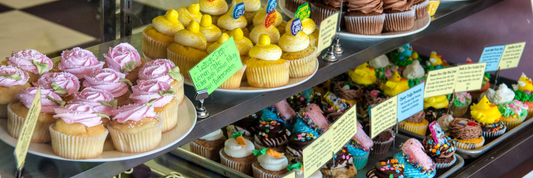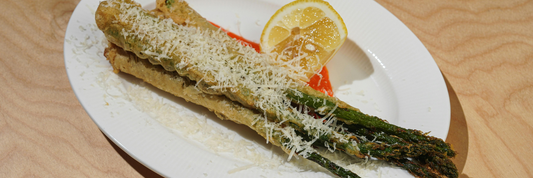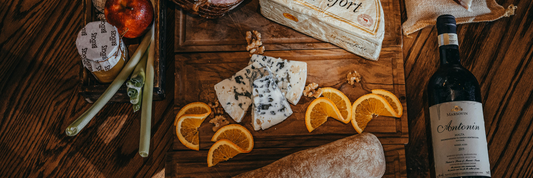If you’re an aspiring restaurant owner, chef, or food entrepreneur dreaming of bringing authentic ramen culture to Canada, this guide is written for you. Opening a ramen shop is an exciting venture but one that requires careful planning, compliance with local regulations, and a deep understanding of Canadian dining trends.
At Kimecopak, we’ve supported countless F&B entrepreneurs across Canada with eco-friendly packaging solutions that help them serve delicious food sustainably. From dine-in restaurants to delivery-focused noodle bars, our packaging ensures your ramen travels well without compromising your environmental values.
Let’s walk through a complete ramen shop checklist to set you up for success from concept development to your grand opening day.
-
How to Start a Ramen Noodle Business: Everything You Need to Know
- How to Open a Japanese Restaurant: Everything You Need to Start Strong
-
Tips for Optimizing Seating and Space in Small Ramen Shops
Why Open a Ramen Shop in Canada – Market & Opportunity

Understanding Canadian Dining Trends
Ramen has become one of Canada’s most beloved comfort foods. Urban centers like Toronto, Vancouver, and Montreal have seen a surge in noodle bars blending traditional Japanese flavors with modern culinary creativity.
-
According to KaTom Restaurant Supply, the startup cost for a ramen shop can exceed $100,000 USD (≈130,000 CAD), with equipment being a major investment.
-
Millennials and Gen Z diners are particularly drawn to ramen because it’s fast, flavorful, and Instagram-worthy.
-
There’s growing interest in plant-based ramen and sustainable dining experiences, opening opportunities for green-minded restaurateurs.
Defining Your Target Customer & Niche
Before you start, identify who you want to serve:
-
Students near universities craving affordable comfort food.
-
Office workers seeking quick, warm lunches.
-
Families and foodies exploring authentic Japanese cuisine.
Your niche determines everything from your menu design to your branding. Whether it’s classic tonkotsu or vegan miso ramen, consistency and authenticity are key.
Kimecopak’s role: As your sustainability partner, we help your ramen shop stand out with eco-friendly take-out bowls, kraft lids, and compostable utensils that reflect your brand’s values and quality.
Pre-Launch Planning & Business Model

Choosing Your Business Model
There’s no one-size-fits-all model. Your decision will affect your budget, staffing, and operations.
-
Dine-in ramen bar: Immersive customer experience but higher rent and build-out costs.
-
Quick-service or kiosk: Fast turnover, perfect for busy areas or campuses.
-
Food truck or ghost kitchen: Low overhead, ideal for testing the market.
Tip: Some Canadian operators start with pop-ups or food trucks to test recipes and build a following before investing in a permanent space. (Vortex Restaurant Equipment)
Writing a Business Plan & Financial Forecast
Your business plan should outline:
-
Concept & mission statement
-
Market analysis (competition, target customers)
-
Startup costs (lease, kitchen setup, licenses, staff)
-
Revenue projections & break-even point
-
Operational plan (hours, suppliers, delivery strategy)
Selecting the Right Location
A strong location can make or break your ramen shop.
-
Prioritize high foot traffic areas near campuses or office districts.
-
Study lease terms, including renovation clauses and rent escalations.
-
Ensure zoning compliance for restaurant use and delivery service.
-
Consider proximity to delivery partners (Uber Eats, DoorDash).
When planning your take-out and delivery operations, use Kimecopak’s heat-resistant, leak-proof bowls to keep ramen fresh and transport-ready.
Legal, Licensing & Compliance in Canada

Business Registration & Structure
-
Choose your business type: sole proprietorship, partnership, or corporation.
-
Register your business name and obtain a GST/HST number.
-
Review local bylaws on signage, waste disposal, and fire safety.
Health & Food Safety Permits
-
Apply for a Food Premises Permit through your provincial health authority.
-
Ensure your kitchen meets ventilation, sanitation, and storage standards.
-
At least one employee must have a Food Handler Certificate.
Zoning, Liquor & Fire Regulations
-
Confirm your space meets zoning requirements for restaurants.
-
Apply for a Liquor License if serving alcohol.
-
Install approved fire suppression systems and ensure routine inspections.
Kitchen & Front-of-House Setup
Essential Kitchen Equipment Checklist
| Category | Equipment | Purpose |
|---|---|---|
| Cooking | Stock pots, noodle cooker, woks | Broth preparation & noodle boiling |
| Refrigeration | Reach-in fridge & freezer | Store meat, broth, and vegetables |
| Preparation | Cutting boards, counters | Efficient ingredient prep |
| Serving | Ramen bowls, ladles, chopsticks | Present food beautifully |
| Safety | Exhaust hood, first aid kit | Meet Canadian food safety standards |
Dining Area & Ambience Design
Your interior design should align with your concept:
-
Traditional Japanese: Wooden accents, minimalist layout.
-
Modern industrial: Open kitchen, casual seating.
-
Eco-inspired: Green plants, natural textures, sustainable décor.
Eco-Friendly Packaging & Serviceware
Take-out is a key revenue stream for ramen shops. Opt for sustainable packaging that maintains temperature and presentation.
Kimecopak’s compostable paper bowls, kraft lids, and bamboo cutlery are:
-
Heat-resistant for hot broth.
-
Leak-proof to prevent spills.
-
Custom-brandable to enhance your shop’s identity.
Your packaging is more than a container — it’s part of your customer experience.

Menu Development & Supply Chain
Crafting Your Signature Bowls
Start small with 3–5 well-tested recipes:
-
Tonkotsu Ramen – rich pork broth.
-
Shoyu or Shio Ramen – lighter soy or salt base.
-
Miso or Vegan Ramen – for plant-based customers.
Consistency is everything. Standardize recipes and train your kitchen team for reliable flavor.
Reliable Ingredient Suppliers in Canada
-
Build relationships with local Asian food distributors for fresh noodles, sauces, and toppings.
-
Source sustainably produced ingredients when possible.
-
Maintain backup suppliers to avoid shortages.
Integrating Take-Out & Delivery
Plan for delivery from the start.
-
Use sectioned bowls for broth and noodles to prevent sogginess.
-
Offer eco-friendly packaging combos from Kimecopak to maintain quality.
-
Include branded thank-you cards to create memorable customer experiences.
Marketing, Launch & Growth Strategy

Pre-Opening Marketing
-
Create your story: “From passion for noodles to your local ramen spot.”
-
Share behind-the-scenes photos, broth-making videos, and sustainability values.
-
Collaborate with local influencers and host preview tastings.
Grand Opening & Customer Testing
-
Host a soft opening for friends and family to gather feedback.
-
Offer limited-time opening promotions.
-
Feature your eco-friendly commitment prominently on menus and social media.
Long-Term Growth: Delivery & Sustainability
-
Partner with delivery apps and ensure packaging integrity.
-
Introduce loyalty programs for repeat customers.
-
Continue promoting your green brand identity with Kimecopak as a trusted supplier.
Financial & Operational KPIs
| KPI | Ideal Range | Notes |
|---|---|---|
| Food cost | 30–35% | Manage portion sizes & suppliers |
| Labor cost | 25–30% | Efficient scheduling & cross-training |
| Rent & utilities | Variable | Keep under 10% of total sales |
| Table turnover rate | 30–45 min | Optimize seating & service speed |
Track monthly profit margins and customer retention to ensure steady growth.
FAQ
Q1: How much does it cost to open a ramen shop in Canada?
It varies by size and location, but according to KaTom, the initial setup may cost $100,000–$200,000 CAD, including kitchen equipment and licensing.
Q2: Do I need chef experience to start a ramen shop?
Not necessarily. Many successful owners hire trained ramen chefs or take culinary workshops to understand broth preparation and operations.
Q3: How can I keep packaging eco-friendly yet affordable?
Opt for biodegradable paper bowls and compostable cutlery in bulk. Kimecopak offers wholesale discounts and customizable branding options to reduce costs.
Q4: What’s the best location for a ramen shop?
Busy downtown areas, university districts, or neighborhoods with strong food delivery demand are ideal.
Q5: What are common mistakes to avoid?
-
Overcomplicating your menu.
-
Ignoring packaging quality for delivery.
-
Underestimating marketing and customer experience.
Conclusion
Opening a ramen shop in Canada is not just about great noodles — it’s about building a memorable dining experience that balances flavor, culture, and sustainability.
By following this checklist and partnering with Kimecopak for premium, eco-friendly packaging, you’re setting your business up for long-term success one delicious bowl at a time.
👉 Explore Kimecopak’s ramen packaging collection to start your journey sustainably.




